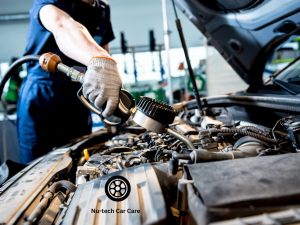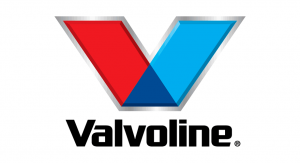Auto current scanners are evolving with the integration of cutting-edge technologies, enhancing their capabilities and user experience. Innovations include advanced sensors, enhanced software algorithms, and more user-friendly interfaces. These improvements result in more accurate diagnostics, faster processing times, and easier operation for both professional mechanics and DIY enthusiasts.
Potential Improvements:
- Enhanced Precision: Modern auto current scanners now feature highly sensitive sensors that detect minute electrical fluctuations, providing more precise diagnostics.
- User-Friendly Interfaces: Touchscreen displays and intuitive interfaces make it easier for users to navigate and interpret data.
- Real-Time Data: Immediate feedback and real-time data analysis enhance the efficiency of diagnostics and repairs.
Importance for Car Battery Repair

Advanced auto current scanners have become essential tools in car battery repair near me, allowing for quick and accurate diagnostics of battery health and electrical issues. These devices help identify problems such as weak batteries, faulty alternators, and electrical shorts.
Roles in Diagnostics:
- Battery Health Analysis: Scanners can assess the state of charge (SOC) and state of health (SOH) of a car battery, providing detailed information on its condition.
- Fault Detection: They can identify specific issues such as voltage irregularities, current leaks, and poor battery connections.
- Efficiency: Quick diagnostics reduce the time spent on troubleshooting and ensure timely repairs, improving customer satisfaction.
Integration with AI and Machine Learning
AI-Powered Diagnostics
Artificial intelligence (AI) is revolutionizing auto current scanners by enhancing their diagnostic capabilities. AI algorithms can analyze data from the vehicle’s electrical system to predict potential issues before they become critical.
AI Enhancements:
- Predictive Maintenance: AI can predict when a battery or electrical component is likely to fail, allowing for preventative maintenance.
- Pattern Recognition: AI algorithms recognize patterns in electrical data, identifying anomalies that may indicate underlying problems.
- Automated Troubleshooting: AI assists in pinpointing the root cause of issues, providing mechanics with clear, actionable insights.
Machine Learning for Data Analysis
Machine learning (ML) algorithms process vast amounts of historical data to improve the accuracy and efficiency of diagnostics. By learning from previous data, ML enhances the auto current scanner’s ability to diagnose issues correctly.
ML Benefits:
- Data-Driven Insights: ML algorithms analyze historical data to identify trends and patterns, improving diagnostic accuracy.
- Continuous Improvement: The more data the system processes, the better it becomes at identifying and predicting issues.
- Customized Diagnostics: ML can tailor diagnostics based on specific vehicle models, making the process more precise and efficient.
Enhanced Connectivity Features

Wireless Connectivity
Wireless technologies like Bluetooth and Wi-Fi are now common in auto current scanners, enabling remote diagnostics and seamless updates.
Advantages:
- Remote Diagnostics: Technicians can diagnose issues remotely, providing support without needing to be physically present.
- Firmware Updates: Wireless connectivity allows for easy updates to the scanner’s software, ensuring it remains current with the latest diagnostic protocols.
- Data Sync: Real-time synchronization of diagnostic data with cloud-based platforms facilitates comprehensive data analysis and reporting.
Integration with Mobile Apps
Mobile applications compatible with auto current scanners simplify the user interface and provide real-time data access, enhancing the diagnostic process.
Mobile App Benefits:
- User-Friendly Interface: Mobile apps offer a familiar interface, making it easier for users to navigate diagnostic tools.
- Instant Access: Users can access diagnostic data in real-time from their smartphones or tablets, streamlining the repair process.
- Comprehensive Reports: Apps can generate detailed diagnostic reports, which can be shared with clients or stored for future reference.
Sustainability and Eco-Friendly Designs
Energy-Efficient Devices
With growing environmental concerns, the development of auto current scanners that consume less power is becoming increasingly important. Energy-efficient designs not only help reduce the carbon footprint but also enhance the overall sustainability of these devices. These innovations lead to longer battery life and reduced energy consumption during diagnostics, contributing to more sustainable practices in automotive care.
Impact on Sustainability:
- Reduced Carbon Footprint: Lower power consumption directly translates to fewer carbon emissions.
- Extended Device Lifespan: Energy-efficient devices tend to have a longer operational life, reducing electronic waste.
- Operational Cost Savings: Less power usage means lower operational costs for mechanics and car repair services.
Use of Recyclable Materials
Manufacturers are increasingly using recyclable and eco-friendly materials to produce auto current scanners. This shift towards sustainability helps minimize environmental impact and promotes the use of renewable resources.
Benefits of Sustainable Designs:
- Environmental Protection: Using recyclable materials reduces the need for raw material extraction, preserving natural resources.
- User Appeal: Eco-conscious consumers are more likely to choose products that align with their values.
- Regulatory Compliance: Meeting environmental standards and regulations becomes easier with sustainable product designs.
Advanced User Interfaces

Touchscreen Interfaces
The adoption of touchscreen technology in auto current scanners has revolutionized user experience, making the devices more intuitive and easier to use. Touchscreen interfaces provide clear visual feedback and allow users to navigate through diagnostic functions effortlessly.
Features of New Touchscreen Interfaces:
- Intuitive Navigation: Easy-to-use menus and functions streamline the diagnostic process.
- Enhanced Visualization: High-resolution displays provide clear, detailed information and diagnostic results.
- Interactive Features: Touchscreen technology allows for interactive tutorials and step-by-step guides directly on the device.
Voice-Activated Controls
Voice-activated controls offer hands-free operation, enhancing convenience and safety for users. This feature is particularly useful for mechanics who need to perform diagnostics while working on the vehicle.
Benefits of Voice Control:
- Increased Efficiency: Allows mechanics to operate the scanner without interrupting their workflow.
- Enhanced Safety: Reduces the need for physical interaction with the device, lowering the risk of accidents or errors.
- User Convenience: Voice commands simplify the use of complex diagnostic functions, making the device accessible to all skill levels.
Real-Time Data Sharing and Cloud Integration
Cloud Storage Solutions
Auto current scanners are leveraging cloud storage to manage diagnostic data more effectively. Cloud integration allows for seamless data access, backup, and analysis, enhancing the overall functionality and reliability of these devices.
Benefits of Cloud Integration:
- Data Security: Cloud storage provides secure backups, protecting data from loss or corruption.
- Accessibility: Technicians can access diagnostic data from any location, facilitating remote consultations and diagnostics.
- Scalability: Cloud solutions can handle large volumes of data, making them ideal for extensive diagnostic records.
Real-Time Data Sharing
The ability to share diagnostic data in real-time with remote technicians enhances service response times and improves the accuracy of diagnostics. This feature is crucial for providing timely and effective car battery repairs and other automotive services.
Importance of Real-Time Data Sharing:
- Improved Collaboration: Enables real-time collaboration between on-site mechanics and remote experts.
- Faster Diagnostics: Immediate access to diagnostic data allows for quicker decision-making and problem-solving.
- Enhanced Customer Service: Quick turnaround times improve customer satisfaction and trust in the service provider.
Future Market Trends

Market Growth Projections
The auto current scanner market is poised for significant growth in the coming years. With the increasing complexity of modern vehicles and the rising demand for advanced diagnostic tools, the market for auto current scanners is expected to expand. Analysts predict a steady growth rate driven by technological advancements, increasing vehicle sales, and the need for precise diagnostics in both developed and developing regions.
Factors Driving Market Expansion:
- Technological Advancements: Innovations in AI and machine learning are enhancing the diagnostic capabilities of auto current scanners, making them more efficient and user-friendly.
- Rising Vehicle Sales: The continuous growth in vehicle sales globally increases the demand for reliable diagnostic tools.
- Regulatory Requirements: Stricter emissions and safety regulations require advanced diagnostic equipment to ensure compliance.
- Increased Awareness: Growing awareness about the importance of regular vehicle maintenance and diagnostics among consumers.
Emerging Market Opportunities
As the market for auto current scanners expands, new opportunities are emerging, particularly in developing regions. Manufacturers are focusing on these markets to address the specific needs of consumers and automotive service providers.
New Opportunities in Developing Markets:
- Affordability: Developing cost-effective models to cater to budget-conscious consumers in emerging markets.
- Local Support: Establishing local support centers and training programs to ensure proper use and maintenance of diagnostic tools.
- Customization: Adapting features to meet the specific requirements of vehicles prevalent in different regions.
- Partnerships: Collaborating with local automotive service providers to expand market reach and improve service quality.
Conclusion
The future of auto current scanners is bright, with continuous advancements improving the efficiency and accuracy of vehicle diagnostics. By embracing these innovations, the automotive repair industry can provide better services, enhance operational efficiency, and meet the evolving needs of consumers.










